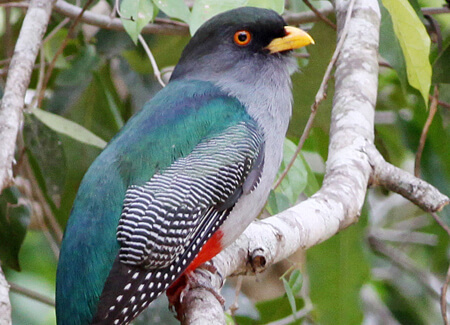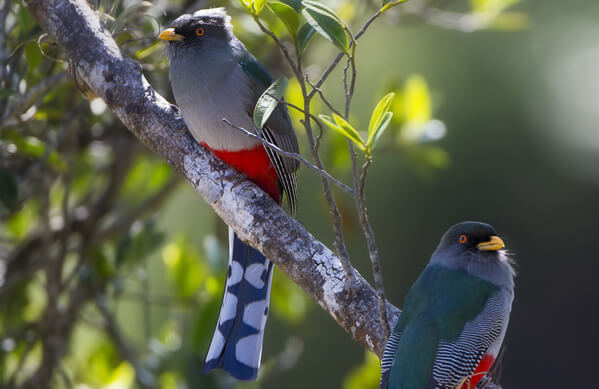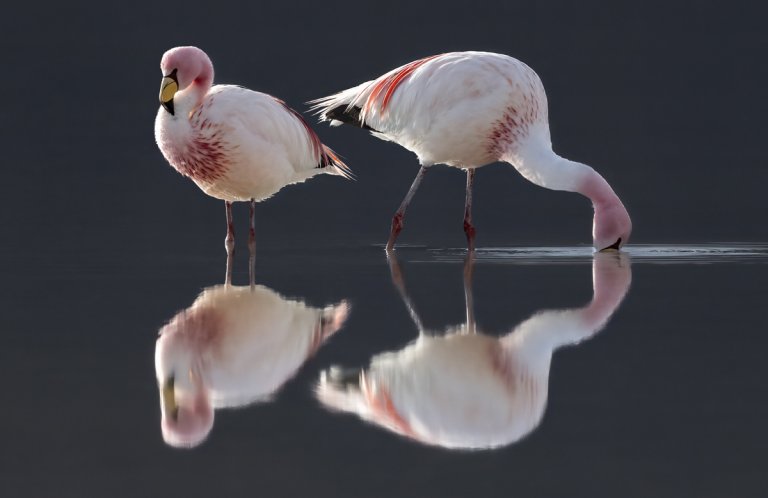 The colorful Hispaniolan Trogon is found only on the island of Hispaniola, which is shared by Haiti and the Dominican Republic. It is the national bird of Haiti; ironically, it is becoming increasingly rare there due to ongoing habitat loss.
The colorful Hispaniolan Trogon is found only on the island of Hispaniola, which is shared by Haiti and the Dominican Republic. It is the national bird of Haiti; ironically, it is becoming increasingly rare there due to ongoing habitat loss.
The species is more common in the Dominican Republic, especially in the relatively undisturbed forests of national parks including Sierra de Bahoruco and Nalga de Maco, where ABC has worked, and Valle Nuevo, where ABC partner Sociedad Ornithologica de la Hispaniola (SOH) is working. The trogon shares these forests with other endangered residents, the Bay-breasted Cuckoo and La Selle Thrush, and the migratory Black-capped Petrel and Bicknell's Thrush.
Sign up for ABC's eNews to learn how you can help protect birds

Hispaniolan Trogon by Ron Knight
Like other trogons, the Hispaniolan is a cavity-nester, often using cavities excavated by another island endemic, the Hispaniolan Woodpecker.
This species is one of only two trogons found in the Caribbean. (The other is the Cuban Trogon.) It is a forest-dependent species, and the biggest threats it faces are rampant habitat loss and degradation caused by logging, charcoal production, and clearing for agriculture and settlement.
ABC and partners SOH, Grupo Jaragua, Fundación Loma Quita Espuela, and Vermont Center for Ecostudies continue work to preserve and protect habitat in the Dominican Republic. In one ongoing, historic effort, Black-capped Petrels are tracked via satellite; in another, ABC helped improve habitat protection in Sierra de Bahoruco National Park and the Loma Charco Azul Biological Reserve.
Donate to support ABC's conservation mission!



















































